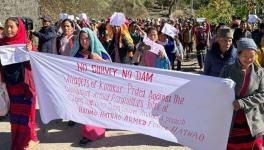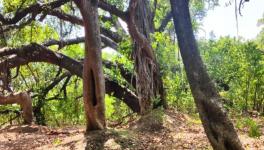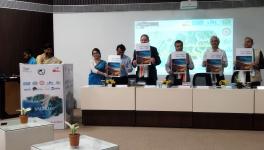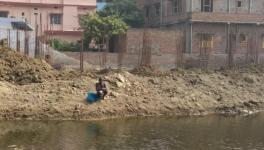Do We Need a New Nature Conservation Paradigm?
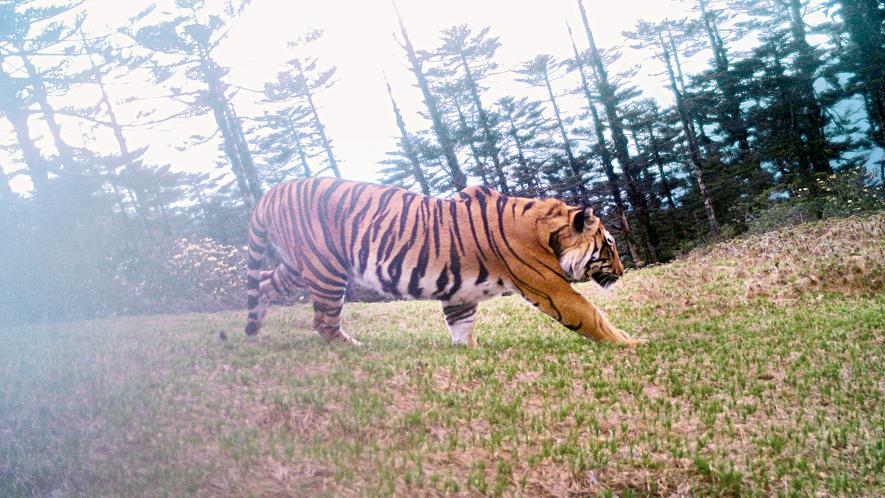
Image Credit: The Telegraph / Aisho Sharma Adhikarimayum and Gopi G.V.
In early December, images of tigers photographed in the snow around the Dibang Valley in Arunachal Pradesh were published by several leading newspapers. The images were the result of a camera trap study led by the Wildlife Institute of India (WII) between 2015 and 2017. Following the publication of the images, the National Tiger Conservation Authority (NTCA) wrote to the Forest Department of the Government of Arunachal Pradesh, requesting them to submit a proposal under section 38V of the Wildlife (Protection) Act (WPA). Such a proposal would turn Dibang Valley into Arunachal Pradesh’s third tiger reserve, after Pakke and Namdapha. However, the local Idu Mishmi community is not particularly enamoured by this turn of events.
On December 25, the Arunachal Times reported that the Idu Mishmi Cultural and Literary Society (IMCLS) has written to the NTCA as well as the Union Ministry of Environment Forests and Climate Change (MoEFCC) seeking to be consulted before any decision on the Dibang tigers is taken. The central demand of the IMCLS is for a cultural model of tiger conservation. The Idu Mishmi people traditionally follow an animist and shamanistic faith. One part of it is the belief that tigers are their elder siblings. Hence, they have never hunted tigers, despite being a community that is adept at hunting. If a tiger is killed in self defence, it will receive the same burial as a human being and the community will also follow the same taboos.
Also Read | Big Dams in Arunachal-Assam Border likely to Resume Work after NGT Green Signal
In 2013, for the first time, the scientific community became aware of the presence of tigers in the Dibang Valley. This occurred when two tiger cubs were ‘rescued’ from a dry water tank in a village close to the Dibang Wildlife Sanctuary along the border with China. The rescue operation was led by a Delhi based non-governmental organisation (NGO) in cooperation with the state forest department. Strangely, in the 1990s a biologist was informed in passing that tigers were a bit of a menace in the Dibang Valley since they attacked cattle. This statement was staunchly refuted by the biologist who told his local field assistant that it was impossible for tigers to survive there due to the high altitude and the lack of suitable prey. Clearly, time has proved that local knowledge trumped scientific expertise in at least this case.
Ambika Aiyadurai, writing for the Economic and Political Weekly in an article titled, The Multiple Meanings of Nature Conservation: Insights from Dibang Valley, Arunachal Pradesh, made a case for what the IMCLS has termed the cultural model of conservation. The article focused on how conservation is often understood in terms where nature can be nature without human presence. The issue with such a paradigm is that wildlife and humans end up being compartmentalised in boxes of our own imagination. Something that was not always the case. Similarly, laws have also been enacted to give effect to and cement this distinction between the wild and the domestic.
Also Read | ‘Earth Champion’ Irony: High Praise, Low Performance
An argument in favour of this model of conservation has been that nature can be protected from human exploitation in the form of trade in wildlife and timber. The issue, however, is that this model of conservation breeds a different kind of human exploitation, that of the domain experts, NGOs and tourist safaris. As Aiyadurai pointed out in the same article, the issue for the Mishmi community is that their land will be taken over for the tiger reserve leaving them in the lurch. The community also expects to be adequately compensated for their livestock which falls victim to carnivore attacks.
Also Read | MoU Between WII and NBCC Raises Several Questions
According to the article in the Arunachal Times, the IMCLS pointed out that WII’s study did not mention how many of the tigers were spotted inside the Dibang Wildlife Sanctuary and how many were in community forests. The state government is aware of the community’s opposition to the tiger reserve and is mulling to convert only the core area of the Dibang Wildlife Sanctuary. The IMCLS has also referred to a 2013 study by Dr. Sahil Nijhawan which found that the majority of tigers in the Dibang Valley live outside the wildlife sanctuary.
As far as the Mishmi community is concerned, the government should stay out of the conservation efforts in the Dibang Valley. To an extent this is a valid point, despite local knowledge, the presence of tigers in the area was unknown to the experts. Thus, perhaps the Dibang Valley represents an opportunity to frame and test a new model of conservation with limited state interference.
Get the latest reports & analysis with people's perspective on Protests, movements & deep analytical videos, discussions of the current affairs in your Telegram app. Subscribe to NewsClick's Telegram channel & get Real-Time updates on stories, as they get published on our website.










